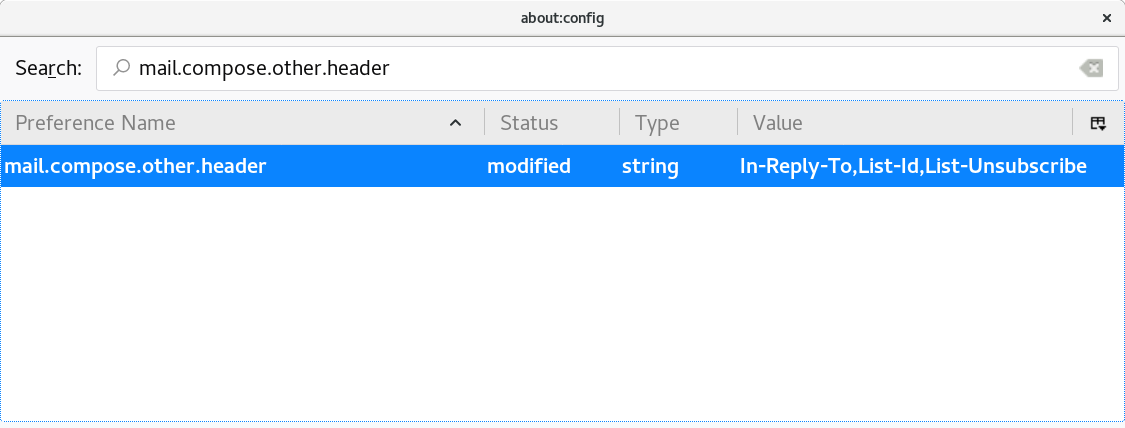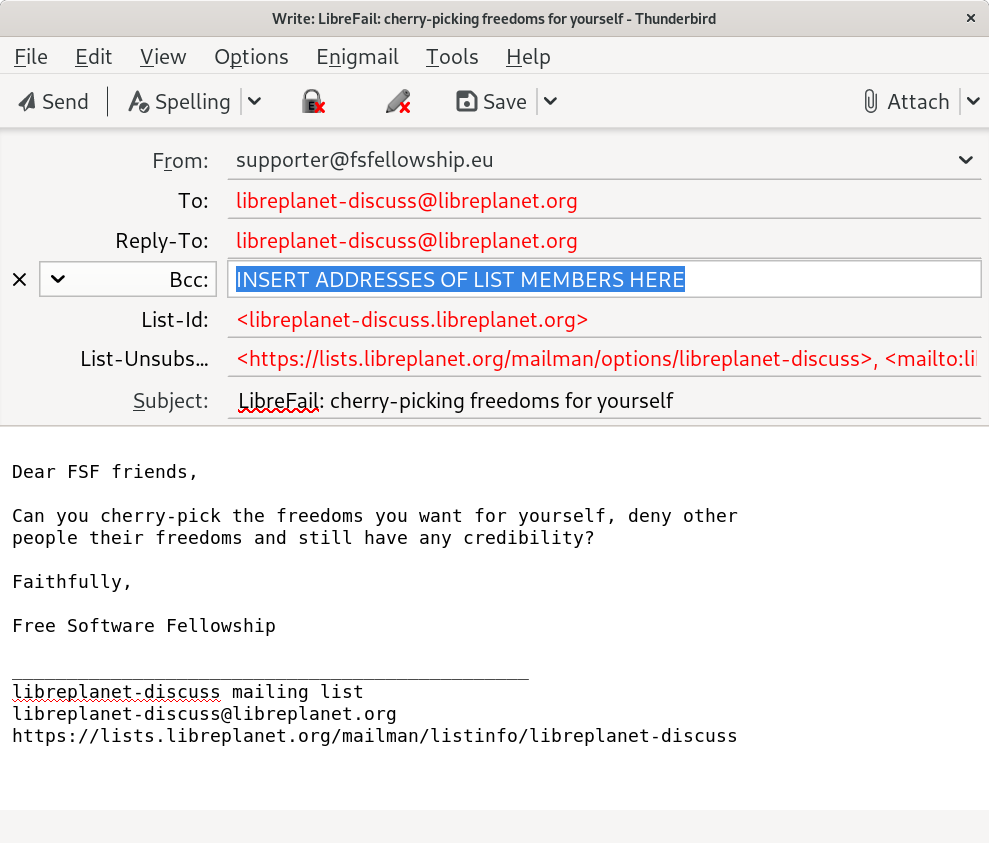Freedom from censorship on mailing lists
A recent blog examined the phenomena of fake communities, especially in the free software space.
One prominent tool used to construct the fake community is the email discussion list.
When people join a discussion list, they assume and believe that they are being exposed to a wide range of opinions. Therefore, when some opinions or critical information is hidden, ordinary members of the list are deceived. People have not consented to this deception.
In 2018, FSFE used these tactics to make it appear that nobody supported elections any more. In 2019, rogue elements of the Free Software Foundation (FSF) staff used the same tactics to undermine their own founder, Richard Stallman. FSF is the organization that explains their use of the word Free using the phrase Free as in speech, not free as in beer. When they don't even allow Free Speech on their own LibrePlanet-discuss mailing list, the organization loses all credibility.
Can you work around mailing list censorship?
By default, it is safe to assume that other members of the mailing list have not consented to being deceived by censorship.
If your messages are being censored and if you didn't consent to censorship, politely working around it, using techniques like BCC, is morally justified.
The monoculture's last gasp
Defenders of the monoculture will make up all kinds of defamation and threats to justify their behaviour.
They regularly try to make claims about netiquette or consent to use the email addresses of other list participants.
Ultimately, by joining a list, the participants have consented to communicate with you about the topic of the list. The technical means you use to communicate with them, whether it involves private emails or list emails, are secondary to that. To put that in reverse: if you used the list to send off-topic spam that was unrelated to the list, the simple fact that you had used the official list infrastructure rather than a side-channel doesn't make your off-topic spam more legitimate. Therefore, they can't credibly argue that sending on-topic mails through a side-channel is less legitimate.
If you believe in freedom, the F in FSF, like the Libre in LibrePlanet, then protecting communication channels is fundamental.
Side channels in practice
Implementing a side-channel is a great way to make the free software community stronger and more resilient against totalitarian behaviour. Here are some of the design criteria:
- Make it as easy as possible for other list members to reply through the official channel or the side-channel.
- Respect the filters that other list users have in place, so the messages you send appear in each recipient's preferred folder.
- Assert it was your intention to send the message through official infrastructure and you were only stopped by censorship.
- Provide a means for people to unsubscribe from the official list.
- Don't break threading, ensure your messages appear at the correct place in threads.
All of these things can be achieved using a combination of message headers, including BCC, Reply-To, List-Id, List-Unsubscribe and In-Reply-To.
In the Mozilla Thunderbird email client, you can add any arbitrary header to a message. To do so, go to the Preferences window, click Advanced and then Config Editor....
In the Config Editor window, look for the key mail.compose.other.header and set the String value In-Reply-To,List-Id,List-Unsubscribe:

Now you can start composing a message. Here is how to populate each header:
- To: the address of the list, as recipients will see it. Example: libreplanet-discuss@libreplanet.org
- Reply-To: the address of the list, where you want people to reply. Example: libreplanet-discuss@libreplanet.org
- BCC: other list members who you want to see your message. Include them one by one or put them in an alias on your own mail server for convenience.
- List-Id: copy this value from another message that you received from the list. For example, for LibrePlanet, it might be <libreplanet-discuss.libreplanet.org>
- List-Unsubscribe: this can also be copied from another message that you received from the list or you could put an alternative URL here. For example, for LibrePlanet, it might be <https://lists.libreplanet.org/mailman/options/libreplanet-discuss>,<mailto:libreplanet-discuss-request@libreplanet.org?subject=unsubscribe>
- In-Reply-To: only set this if you are writing a message that is a reply to another message on the list. If you received the message in the same mail program and clicked the Reply button then this header is already set for you. If you received the previous message through some other means then you might need to set this manually.
- Subject: some mailing lists include the list name in the subject. If that is the case, you will want to do the same thing. LibrePlanet inserts [libreplanet-discuss] in the subject.
- Message footer: if the list messages have a footer, it is also a good idea to copy it. Here is an example of the footer used in the libreplanet-discuss list:
_______________________________________________ libreplanet-discuss mailing list libreplanet-discuss@libreplanet.org https://lists.libreplanet.org/mailman/listinfo/libreplanet-discuss
Here is an example:

Questions and feedback?
Please come and share your experiences of mailing list censorship on the Fellowship mailing list.